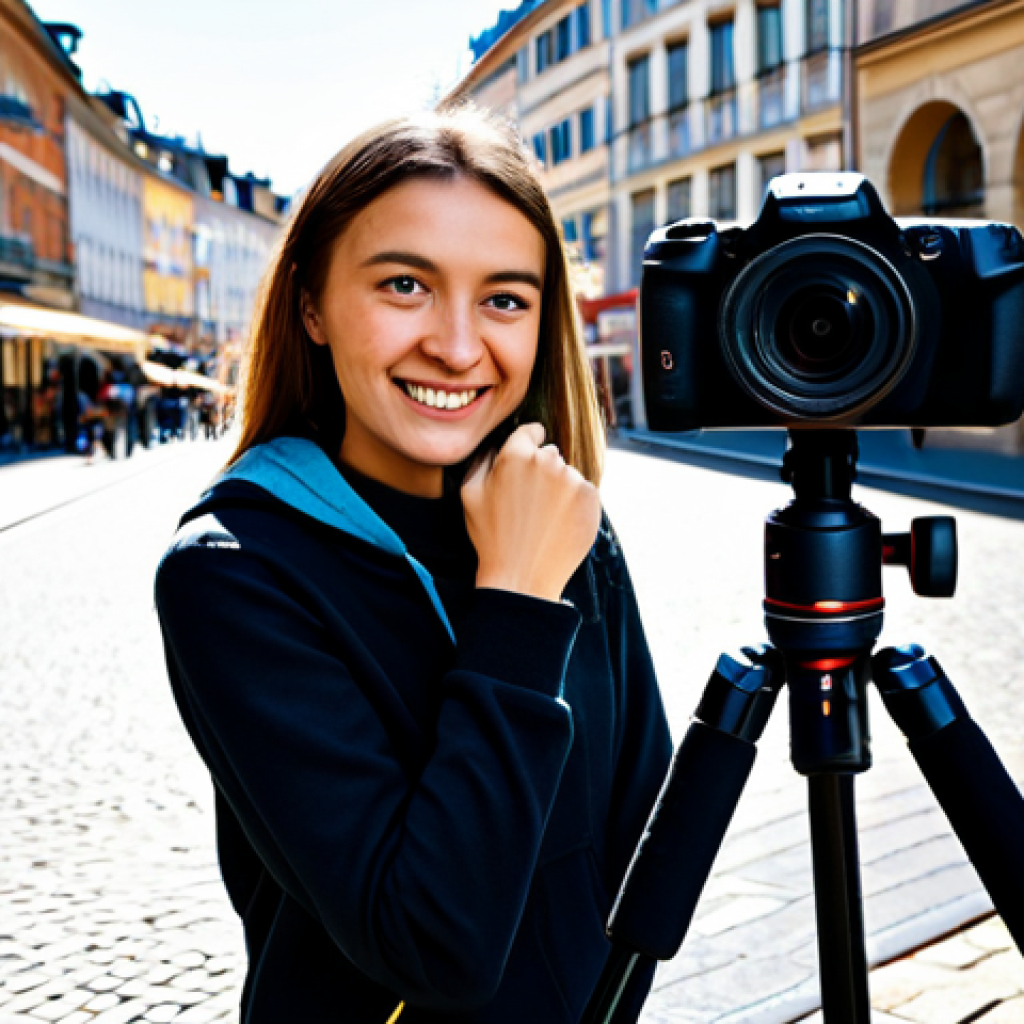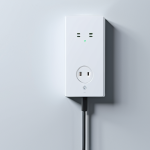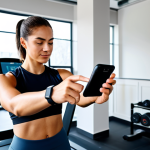Have you ever tried to shoot a stable video with your smartphone, only to end up with a shaky mess that makes you dizzy just watching it? I know I have, and it’s incredibly frustrating!
With everyone from aspiring TikTok stars to serious mobile journalists now creating amazing content right from their pockets, the humble smartphone tripod has quickly become an absolute game-changer.
But here’s the real challenge: walking into any electronics store or browsing online, you’re hit with an overwhelming wall of options. From incredibly lightweight, pocket-sized models perfect for your spontaneous travel vlogs to more robust, feature-packed stands designed for cinematic masterpieces, it’s easy to feel completely lost.
You might even be eyeing those cutting-edge tripods boasting integrated AI tracking for your live streams – are they truly worth the investment? It’s not just about steadying your phone anymore; it’s about unlocking its full creative potential, whether you’re capturing that breathtaking sunrise time-lapse or nailing a perfectly framed interview.
Don’t waste your hard-earned money on a flimsy piece of plastic that just won’t hold up. Let’s find out exactly how to choose the best one for *you*.
Have you ever tried to shoot a stable video with your smartphone, only to end up with a shaky mess that makes you dizzy just watching it? I know I have, and it’s incredibly frustrating!
With everyone from aspiring TikTok stars to serious mobile journalists now creating amazing content right from their pockets, the humble smartphone tripod has quickly become an absolute game-changer.
But here’s the real challenge: walking into any electronics store or browsing online, you’re hit with an overwhelming wall of options. From incredibly lightweight, pocket-sized models perfect for your spontaneous travel vlogs to more robust, feature-packed stands designed for cinematic masterpieces, it’s easy to feel completely lost.
You might even be eyeing those cutting-edge tripods boasting integrated AI tracking for your live streams – are they truly worth the investment? It’s not just about steadying your phone anymore; it’s about unlocking its full creative potential, whether you’re capturing that breathtaking sunrise time-lapse or nailing a perfectly framed interview.
Don’t waste your hard-earned money on a flimsy piece of plastic that just won’t hold up. Let’s find out exactly how to choose the best one for *you*.
Elevating Your Mobile Content: Why a Tripod Is More Than Just a Stand

When I first started dabbling in mobile videography, I thought any old stand would do. Boy, was I wrong! It’s not just about keeping your phone still anymore; it’s about unlocking a whole new level of creative freedom that frankly, you’re missing out on without the right gear.
Think about it: that stunning time-lapse of a sunset, a perfectly framed product shot for your online store, or even just a stable video call with family.
My own experience taught me that a cheap, wobbly tripod is worse than no tripod at all. It adds frustration, not professionalism. I remember trying to film a cooking tutorial, and every time I touched the phone, the entire setup vibrated like a faulty washing machine.
The resulting footage? Absolutely unusable. That’s when I truly understood that investing in a quality smartphone tripod isn’t an indulgence; it’s a necessity for anyone serious about their mobile content.
It elevates your work from amateur attempts to something genuinely compelling, making your audience stick around for longer and feel more engaged with what you’re putting out there.
1. Transforming Your Shots from Casual to Captivating
Have you ever scrolled past a video and immediately noticed how professional it looked, even though you knew it was shot on a phone? Chances are, a quality tripod was involved.
It’s that invisible hand steadying your frame, eliminating the jitters that scream “amateur hour.” I’ve seen countless budding creators give up simply because their content never looked “good enough,” and often, a shaky camera was the culprit.
For me, the moment I switched from handheld shots to using a proper tripod, my engagement numbers jumped. People noticed the difference. It wasn’t just about sharp focus; it was about the comfortable viewing experience, the feeling of intentionality in every frame.
This seemingly small accessory can truly transform your output, making your audience respect your craft and keep coming back for more. It allows you to focus on the story, the message, and the performance, rather than wrestling with a bouncing frame.
2. The Freedom of Remote Control and Perfect Angles
Beyond the obvious stability, a good tripod opens up a world of possibilities for angles and remote operation. Ever tried to get a full-body shot of yourself for a fashion reel or a complex movement for a dance video?
Without a tripod, it’s a nightmare of self-timers, leaning your phone against precarious objects, and praying it doesn’t fall. I recall a particularly disastrous attempt at a product demo where my phone, precariously balanced on a stack of books, toppled mid-sentence, sending my new gadget crashing.
With a solid tripod and a Bluetooth remote, those worries vanish. You can position your phone exactly where you want it – high, low, wide, or tight – and trigger the recording or photo with a simple click.
This level of control isn’t just convenient; it’s essential for achieving those cinematic looks or even just getting everyone in the family photo without someone’s arm awkwardly sticking out holding the phone.
It’s the difference between hoping for a good shot and confidently capturing one.
Navigating the Landscape: Understanding Different Tripod Form Factors
The sheer variety of smartphone tripods out there can be utterly overwhelming. From the tiniest bendy legs to professional-grade stands, each type serves a unique purpose.
It’s not just about picking one; it’s about understanding what each form factor is designed for and how it aligns with your specific content creation habits.
I’ve personally owned a few, and let me tell you, what works for a quick TikTok might be utterly useless for a stable long exposure shot. The key is to match the tool to the task, not just pick the one that looks coolest on the shelf.
Don’t be fooled by flashy marketing; dig a little deeper into the actual design and intended use of each type.
1. The Mighty Mini and Flexible Friends: For On-the-Go Creators
These are your compact, lightweight heroes. Think small tabletop tripods or those incredibly versatile Gorillapod-style flexible tripods. They’re perfect for vlogging on the move, quick desk setups for video calls, or wrapping around objects like tree branches or railings for unique angles.
I absolutely adore my mini tripod for spontaneous travel vlogs – it fits right into my smallest bag and sets up in seconds. The flexible ones are great for wrapping around a lamppost for a stable shot when you’re out exploring, or even just using as a handy grip for walking shots.
But here’s a critical caveat: while flexible, they aren’t always the most stable for taller setups, and if you’re using a heavier smartphone, they can sometimes sag or topple if not positioned perfectly.
They excel in portability and adaptability, not necessarily in towering stability.
2. The Telescoping Wonders: Balancing Portability with Height
These often look like a hybrid between a selfie stick and a tripod, and honestly, they usually are. They extend upwards, giving you crucial height for standing shots or getting above crowds.
Many come with built-in Bluetooth remotes, which is a massive plus for solo creators. I use one of these regularly for outdoor shoots where I need to get my phone higher off the ground for better framing.
The main thing to consider here is stability at full extension. A cheap telescoping tripod will wobble like crazy with even a slight breeze or touch. Invest in one with sturdy leg sections and a wide base if you plan to use it at maximum height.
I learned this the hard way trying to film a street interview; the entire setup swayed every time a car drove past, making the footage virtually unusable.
3. The Robust Professionals: Maximum Stability and Features
If you’re aiming for cinematic shots, product photography, or long-form interviews, you’re looking at the more traditional, heavier-duty tripods. These typically feature adjustable-height legs with strong locking mechanisms, robust phone mounts, and often, fluid heads for smooth panning and tilting.
They’re less portable, certainly, but they offer unparalleled stability and precision. When I was doing a series of product review videos, I invested in a proper aluminum tripod, and the difference was night and day.
Every shot was rock-solid, the pans were silky smooth, and I could trust it to hold my phone securely for hours. This is where you get into tripods that can also handle heavier cameras, making them a versatile long-term investment if your content creation evolves beyond just your smartphone.
Crucial Considerations: What to Look for Beyond the Basics
Buying a smartphone tripod isn’t just about picking something that holds your phone; it’s about understanding the nuances that separate a frustrating experience from a seamless one.
There are specific features and aspects that, from my personal trials and errors, truly make a difference in day-to-day use. Don’t get caught up in flashy gimmicks; focus on the practicalities that impact your workflow and the quality of your output.
1. Mount Compatibility and Secure Grips
This is non-negotiable. Your tripod is only as good as its phone mount. Look for a mount that expands wide enough for your specific phone (especially if you have a larger model like a Pro Max or Plus) and, crucially, holds it securely without flexing or slipping.
Some mounts use spring-loaded clamps, others use screw-in mechanisms. I’ve found screw-in mounts to be generally more secure, offering a tighter grip, but spring-loaded ones are faster to use.
Also, consider if you use a bulky case on your phone. Will the mount accommodate it? I had a terrifying moment where my phone slipped out of a flimsy mount on a windy day, luckily landing on soft grass.
Always prioritize a robust and well-padded grip that won’t scratch your phone but will hold it firm as a rock.
2. Build Quality and Material Durability
This directly impacts both the tripod’s stability and its lifespan. Cheap plastic tripods might save you a few bucks upfront, but they’ll likely disappoint quickly.
They flex, creak, and often break after minimal use. Look for materials like aluminum, carbon fiber, or high-quality, dense ABS plastic. Carbon fiber is incredibly light and strong but typically pricier.
Aluminum offers a great balance of durability and cost. I once bought a super cheap plastic tripod that cracked on its first outdoor shoot when I accidentally put a little too much pressure on a leg.
It taught me a valuable lesson: sometimes, spending a little more for quality means you only buy it once.
3. Height and Adjustability: Tailoring to Your Vision
The maximum and minimum height of a tripod are critical. Do you need to shoot standing interviews? You’ll need something that extends to at least eye level (for you or your subject).
Are you planning to shoot low-angle creative shots or tabletop content? Then a tripod that can get close to the ground is essential. Beyond just height, look for independent leg adjustments.
This is a godsend when shooting on uneven terrain – a rocky beach, a sloping hillside, or even just an old uneven pavement. I’ve been on location shoots where only a tripod with individually adjustable legs allowed me to get a perfectly level shot without resorting to piling up rocks under one leg.
| Tripod Type | Best Use Case | Key Advantages | Potential Drawbacks |
|---|---|---|---|
| Mini/Flexible Tripod | Quick Vlogs, Desk Setups, Unique Angles (Wrapping) | Extremely Portable, Versatile, Lightweight | Limited Height, Less Stable for Heavy Phones, Can Sag |
| Telescoping/Selfie Stick Hybrid | Standing Vlogs, Group Shots, Elevated POV | Good Height Range, Often Includes Remote, Compact When Collapsed | Stability Issues at Max Extension, Can Feel Flimsy |
| Professional/Standard Tripod | Cinematic Shots, Product Photography, Interviews, Time-Lapses | Maximum Stability, Precise Control, Durable Build | Less Portable, Heavier, Higher Price Point |
| AI Tracking Tripod | Live Streams, Dynamic Vlogging, Solo Presentations | Automated Subject Tracking, Hands-Free Operation | Higher Cost, Relies on AI Performance, Can Be Bulky |
Smart Features and Connectivity: Leveraging Technology for Better Content
In today’s tech-driven world, smartphone tripods aren’t just rigid sticks anymore. Many come packed with smart features that can significantly enhance your filming experience, making tasks easier and your output more professional.
From remote controls to sophisticated AI tracking, these innovations are changing the game. But, like all tech, not every feature is equally useful for everyone, and it’s essential to consider if the added complexity and cost are truly worth it for your specific needs.
I’ve experimented with a few of these, and some have been absolute game-changers, while others were just… nice to have.
1. Remote Controls: Your Best Friend for Solo Shoots
Almost every modern smartphone tripod, especially the telescoping and hybrid types, comes with a small Bluetooth remote. Trust me, this is not a gimmick; it’s an absolute lifesaver.
Being able to start and stop recording or snap a photo from a distance means you can be in the frame, perfectly composed, without awkwardly reaching for your phone or relying on frustrating self-timers.
I use mine constantly for solo fashion shoots or when I’m filming myself explaining something. It saves so much time and eliminates the need for constant re-takes because you missed the timer or bumped the phone.
Ensure the remote is reliable, has decent battery life, and connects easily to your phone without constant dropouts.
2. The AI Revolution: Auto-Tracking for Dynamic Content
This is the cutting edge. AI-powered tripods use facial recognition or object tracking to automatically pan and tilt your phone, keeping you (or your subject) perfectly in frame as you move.
For live streamers, fitness instructors, or anyone who needs to move around while filming themselves, this is a revolutionary feature. Imagine giving a presentation or doing a cooking demo without worrying about staying within the camera’s view.
I was skeptical at first, but after trying one for a dynamic tutorial video, I was hooked. It truly feels like having a personal camera operator. However, these are often pricier, and their performance can vary.
Do your research, watch reviews, and check for reliable tracking in different lighting conditions. They typically work best with good lighting and clear lines of sight.
Tailoring the Choice: Aligning Your Tripod with Your Content Goals
Choosing the “best” smartphone tripod isn’t about finding the most expensive or feature-rich option; it’s about finding the perfect fit for *your* unique content creation journey.
What works for a professional mobile journalist will be overkill for a casual family vlogger, and vice versa. It’s about understanding your primary use cases, your portability needs, and honestly, your budget.
Don’t fall into the trap of buying something with features you’ll never use.
1. For the On-the-Go Vlogger and Traveler
If your content involves a lot of walking, spontaneous shots, or filming in diverse locations, portability is paramount. You need something lightweight, compact, and quick to set up.
A mini flexible tripod or a sturdy telescoping selfie stick tripod will be your best companions. I’ve backpacked through Europe with a small Gorillapod-style tripod, and it was invaluable for capturing stable shots in bustling markets or perched on railings overlooking scenic views.
Look for models that can double as a comfortable handgrip for walking shots and can withstand a bit of rough and tumble.
2. For the Home Studio Creator and Interviewer
If your primary filming happens in a dedicated space – a home office, a product photography setup, or a quiet room for interviews – then stability and adjustability take precedence over extreme portability.
A full-sized, robust tripod made of aluminum or a similar sturdy material will serve you best. These allow for precise framing, smooth camera movements (if you get one with a fluid head), and consistent lighting setups.
This is where you might consider models with features like spirit levels for perfect alignment and quick-release plates for easy mounting and dismounting of your phone.
3. For the Live Streamer and Dynamic Presenter
If you’re often live on platforms like TikTok, Instagram Live, or YouTube, or if you need to move around while presenting, an AI tracking tripod is a game-changer.
It frees you from having to stay rigidly in one spot or constantly adjust your camera. Imagine being able to walk across your studio, demonstrate something on a whiteboard, or even perform a dance routine, all while your phone autonomously keeps you in the frame.
This technology truly empowers solo creators to produce highly engaging and dynamic content without needing a second pair of hands. Just make sure to read reviews specific to the tracking performance, as some are more reliable than others.
Maximizing Your Investment: Tips for Longevity and Optimal Performance
Once you’ve chosen your perfect smartphone tripod, the journey doesn’t end there. Proper care and smart usage can significantly extend its lifespan and ensure it performs optimally every single time you use it.
From simple maintenance to understanding its limitations, these tips come from years of using and occasionally breaking these essential tools.
1. Regular Cleaning and Storage
It might sound obvious, but dust, dirt, and grime can affect the smooth operation of your tripod’s moving parts and locking mechanisms. Especially if you’re using it outdoors, give it a quick wipe-down after each use.
Pay attention to the leg locks and the phone mount. Store it in a clean, dry place, ideally in a protective pouch if it came with one. I always keep my tripod in a soft bag to prevent scratches and accidental damage during transport, which also keeps dust out of the joints.
This simple habit keeps it looking new and functioning flawlessly for longer.
2. Don’t Over-Tighten or Force Components
This is a common mistake that can easily lead to breakage. Whether it’s the leg locks, the ball head, or the phone mount, tighten them just enough to be secure, but never force them beyond their natural stopping point.
Plastic components are particularly susceptible to cracking under excessive pressure. Similarly, if a leg or section feels stuck, don’t just yank it. Inspect it for obstructions or misalignment.
I once cracked a phone mount by trying to force my phone into it while it was still in a bulky case, forgetting to adjust the mount first. Patience and gentle handling are key.
3. Understand Weight Limits and Stability
Every tripod has a maximum weight capacity. While smartphone tripods are designed for phones, it’s easy to forget that adding a heavy lens attachment, an external microphone, or an LED light can push it over the limit.
Overloading your tripod can lead to instability, wobbling, or even collapse, potentially damaging your expensive phone. Always be mindful of the total weight you’re asking your tripod to support, especially when extending it to full height.
Test its stability gently before walking away from it. A little common sense here can save you a lot of heartache and potential repair costs. Finding the perfect smartphone tripod might seem like a small detail in the grand scheme of content creation, but trust me, it’s a foundational piece of the puzzle.
It empowers you to create higher-quality, more engaging content, reduces frustration, and ultimately, helps you unlock the full creative potential of the device you already carry in your pocket.
Invest wisely, take care of your gear, and watch your mobile videography and photography soar. Happy shooting!
Closing Thoughts
As we wrap this up, remember that the right smartphone tripod isn’t just an accessory; it’s an extension of your creative vision. It’s the silent workhorse that ensures your hard work translates into visually stunning, stable content that truly resonates with your audience. Don’t underestimate its power to elevate your craft and open up new avenues for your mobile storytelling. Take the plunge, choose wisely, and start capturing your world with newfound stability and artistry.
Helpful Tips to Remember
1. Always prioritize stability over features you don’t truly need. A wobbly tripod is worse than none at all, no matter how many bells and whistles it has.
2. Consider your primary use case: Are you an on-the-go vlogger, a home studio creator, or a dynamic live streamer? Let your workflow dictate your choice.
3. Don’t skimp on the phone mount. A secure grip is paramount to protecting your valuable device from accidental falls.
4. Invest in quality materials like aluminum or carbon fiber if your budget allows; they offer superior durability and stability.
5. Regular cleaning and proper storage will significantly extend the lifespan of your tripod and maintain its optimal performance.
Key Takeaways
A quality smartphone tripod is essential for stable, professional mobile content. Different form factors (mini, telescoping, professional) suit various needs, from portability to maximum stability. Crucial considerations include secure phone mounts, durable build materials, and adjustable height. Smart features like Bluetooth remotes and AI tracking can enhance specific content types. Align your choice with your content goals, and remember that proper care ensures longevity and consistent performance.
Frequently Asked Questions (FAQ) 📖
Q: With so many options out there, how do I even begin to narrow down the best smartphone tripod for my needs without getting completely overwhelmed?
A: Oh, I totally get it – walking into that sea of tripods, it feels like you need a compass and a map! My biggest piece of advice, from someone who’s been through the trial and error, is to start by honestly asking yourself: What am I really going to use this for?
Are you a weekend warrior trying to capture stunning landscapes on your hikes, meaning portability is paramount? Or are you aiming for a more stable, stationary setup for professional-looking interviews or product reviews in your home studio?
If you’re constantly on the go, a lightweight, compact model that folds down small enough for your backpack is key – think a Joby Gorillapod or a pocket-sized travel tripod.
But if stability for longer shots or heavier attachments (like external mics or lights) is your priority, you’ll want something with a more robust build, perhaps aluminum or even carbon fiber, with a higher weight capacity.
Don’t fall for the trap of buying the cheapest option that won’t hold up, nor the most expensive one packed with features you’ll never touch. Pinpoint your primary use case, set a realistic budget, and then look for models that tick those boxes.
Trust me, it simplifies the whole process immensely!
Q: Those high-tech tripods with integrated
A: I tracking sound amazing for live streams, but are they genuinely worth the hefty investment for the average user, or is it just an expensive gimmick?
A2: That’s the million-dollar question, isn’t it? When I first saw those AI-tracking tripods, I was fascinated but also pretty skeptical. “Do I really need something that follows me around?” The truth is, it completely depends on your content.
For someone like a fitness instructor, a cooking demonstrator, or even a gaming streamer who moves around a lot during their sessions, an AI-tracking tripod can be an absolute game-changer.
Imagine demonstrating a yoga pose or showing off a recipe without constantly having to adjust your phone or have someone else pan the camera – it’s pure freedom!
It liberates you to focus entirely on your content and audience. However, if your primary use is static shots, like recording a product review from your desk, shooting a time-lapse of a sunset, or just getting a steady shot for family videos, then, frankly, an AI-tracking tripod is probably overkill and a significant unnecessary expense.
For those scenarios, a solid, traditional tripod with a good ball head is more than sufficient. So, before you open your wallet, think hard: are you frequently moving in front of the camera, or is your content mostly stationary?
Your answer will tell you if it’s an innovation you truly need or just a fancy extra.
Q: How can I avoid wasting my money on a “flimsy piece of plastic” that won’t hold up, as mentioned in the introduction? What should I look for to ensure durability and reliability?
A: Oh, the horror stories I could tell you about flimsy tripods! I once bought a super cheap one online for a quick beach video, and the leg literally snapped clean off when a gust of wind hit it – phone and all, thankfully no damage, but talk about a heart attack!
Avoiding that “flimsy piece of plastic” is crucial. First off, materials matter. Steer clear of anything that feels like cheap, brittle plastic.
Look for aluminum or even carbon fiber for the legs – they’re pricier, but they offer significantly better stability and durability. Carbon fiber is lighter and incredibly strong, perfect for travel.
Aluminum is a great robust option for general use. Secondly, check the weight capacity. This is often overlooked, but if your phone (especially with a case or external lens) exceeds the tripod’s maximum recommended weight, it’s a recipe for disaster.
Thirdly, examine the joints and locking mechanisms. Are they robust clamps or flimsy twist locks that feel like they’ll strip after a few uses? A good quality tripod will have solid, secure locks.
Finally, read genuine user reviews. Head to Amazon, Best Buy, or dedicated tech review sites and pay attention to what real people are saying about the build quality after extended use.
Look for consistent complaints about breakage, wobbling, or failing parts. Investing a little more upfront in a reputable brand with solid construction will save you a lot of headaches, and potentially a smashed phone, down the line.
It’s truly a false economy to go for the cheapest option here.
📚 References
Wikipedia Encyclopedia
구글 검색 결과
구글 검색 결과
구글 검색 결과
구글 검색 결과
구글 검색 결과





